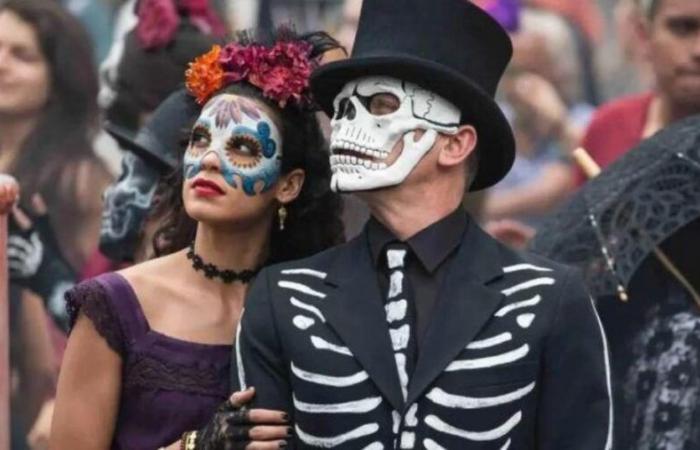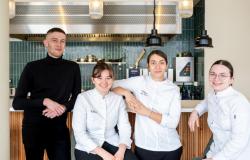A tradition more than 3,000 years old
In Mexico, Día de los Muertos, a tradition listed as UNESCO’s Intangible Cultural Heritage of Humanity in 2008, as an indigenous celebration of the dead, dates back more than 3,000 years to the time of the Aztecs. , Toltecs and other Nahua peoples. It is therefore in no way a Mexican version of Halloween, the date of which is set for October 31. The Día de los Muertos festivities take place on the first two days of November, on the feast of All Saints and on the day of commemoration of the deceased faithful of the Catholic Church, at the time of the corn harvest, the country’s main food crop, in the fall.
Flowered skulls, feasts, offerings and carnivals
In these pre-Hispanic cultures, the dead were always members of the community, kept alive by memory and spirit, and, on the occasion of Día de los Muertos, they temporarily returned to earth. The modern celebration of the Mexican Day of the Dead is a mixture of pre-Hispanic religious rites and Christian holidays, which allows the rapprochement of two universes, that of indigenous beliefs and that of a vision of the world introduced by European settlers in the 16th century. century. It traditionally takes place with the family, for three full days, from October 31 to November 2, this last day being precisely the famous “Día de los muertos” – “Day of the Dead”. October 31 and November 1 are dedicated to dead children, the “angelitos”. A snack and a breakfast are notably dedicated to them.
The “bread of the dead”, a typical sweet bread
During this period, colorful skulls bloom everywhere. To commemorate their deceased, families come together to prepare a feast including sugar skulls and cook the favorite dishes of their deceased loved ones, which they offer on altars decorated with paper garlands and flowers and built to welcome the spirits. who are returning to the kingdom of the living. The Mexicans have water, food, family photos and candles there. Among the traditional offerings, the “pan de muerto”, or “bread of the dead”, a typical sweet bread often decorated with anise seeds and decorated with bones and skulls made of dough.
Carnivals and voodoo rites
The Day of the Dead sometimes takes on the appearance of a carnival, where people dress up, particularly as skeletons. This is particularly the case in the Voodoo religion practiced in Benin, Togo, Haiti and even New Orleans, in the south of the United States. Ceremonies so exuberant in Africa that during the colonial era, they were banned because they were considered too wild.
The formidable Baron Saturday
The spirits of the dead are represented there by a divinity called Baron Samedi. Depicted wearing a white top hat, an evening suit, sunglasses with one lens broken, with cotton in his nostrils, he is the spirit of death and resurrection. He is found at the entrance to cemeteries: considered the master of death in voodoo worship, he decides who can enter the world of the dead or not. As the Day of the Dead approaches on November 2, it serves as revenge for wandering souls and persecuted people. Believers invoke him with incantatory chants that can last for entire nights.






